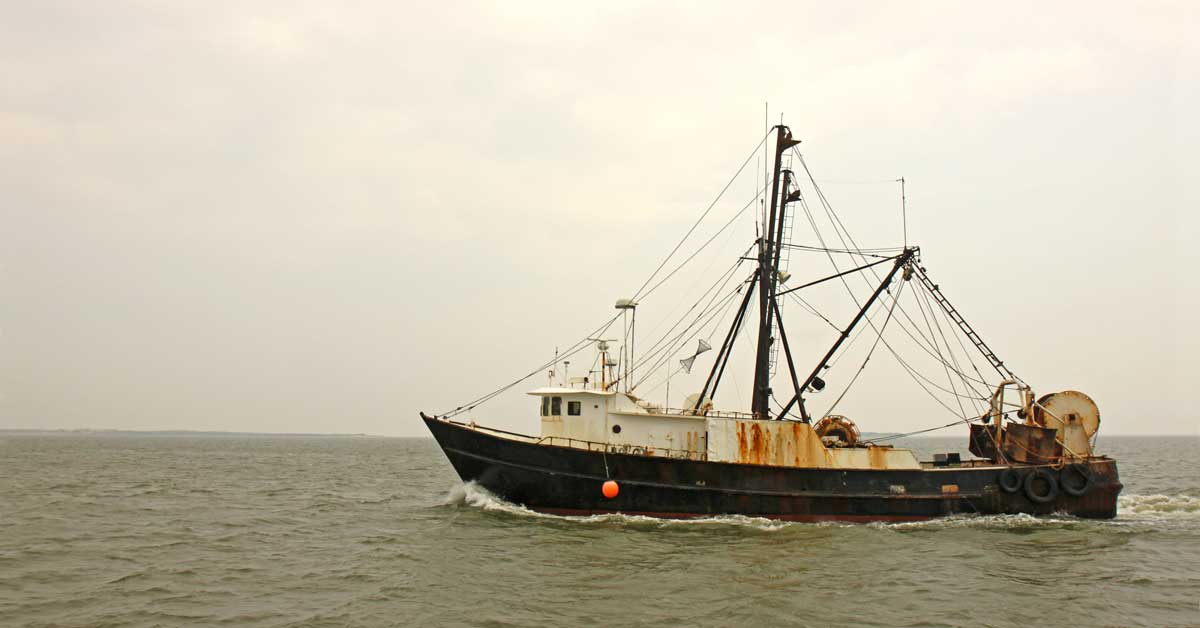In recent years, seafood has emerged as an increasingly critical part of the American diet. As U.S. consumers have become more health-conscious, the amount of meat eaten by the average American has dropped precipitously, falling by almost a fifth between 2005 and 2014 alone. In this environment, seafood has emerged as an increasingly important source of protein for many households in the United States. According to the National Oceanic and Atmospheric Administration (NOAA), Americans now eat almost 15 pounds of seafood per year.
From a business perspective, many would assume this is good news for the U.S. seafood industry—a sector that employed more than 200,000 U.S.-born workers in 2015, according to U.S. Census data. The U.S. seafood industry, however, has been largely unable to capitalize on the increase in domestic seafood consumption. In the last 20 years, the share of seafood sold in the United States that was fished or processed here has dropped dramatically, leaving the industry capable of meeting less than 10 percent of U.S. demand.
Many in the seafood industry point to one prominent factor that has kept them from keeping up with rising demand: The country’s dire shortage of seafood processing workers. Jobs at seafood processing facilities often are seasonal, meaning workers can go months without a paycheck. They also require long hours and often entail repetitive and physically draining work in cold or wet conditions.
Given this, few American workers are willing to take on such roles, even though they pay higher than most positions open to those without college degrees. This leaves processors dependent upon foreign-born workers, a group increasingly hard to come by, given the challenges posed by our current immigration system.
In this report, we explore the economic costs associated with the country’s shortage of fish processing workers. Using data from the U.S. Department of Agriculture and the Bureau of Economic Analysis, we estimate how lowering our reliance on imported seafood, even marginally, would create jobs for thousands of American workers. We also discuss how current visa programs—and the uncertainty around them—are far from sufficient to meet the industry’s current labor needs.
Our work clearly shows that the U.S. fishing and seafood industry currently faces particularly turbulent waters. Improving the immigration system so that fishing processors can better recruit and retain needed labor would benefit not only fishing-dependent areas like Washington, Alaska, and Florida, but the broader U.S. economy overall.
In an era when American consumers are demanding more seafood from safer sources, domestic seafood operators should be enjoying robust business growth, creating jobs not only in fishing but in related industries such as trucking and warehouse logistics. Whether they will be able to realize this unique opportunity and reduce America’s near total reliance on seafood imports will very much depend upon whether Congress is able to move past the partisan divisions defining today’s immigration debate toward practical, economically smart reforms.
In Catch as Catch Can, we find that:
The U.S. seafood industry is increasingly unable to keep up with growing consumer demand.
While 22.9 percent of the seafood products sold in the United States came from U.S. seafood processors in 2000, that figure had dropped to just 13.6 percent by 2005. Today, just 6.8 percent of the U.S. seafood supply is processed domestically.
American workers and the overall economy would benefit if the country could reduce its reliance on seafood imports.
If the domestic seafood industry were able to recapture just 7 percent of imports—essentially regaining the same market share it held in 2005— more than 11,000 jobs would be created for American workers in a variety of industries. The country’s total household earnings would grow by more than $450 million during that period as well, and gross domestic product would rise by almost $820 million annually.
Some U.S. states would see particularly large benefits if U.S. seafood processors reached their 2005 domestic market share.
Alaska, Louisiana, North Carolina, and Virginia would benefit the most from a lowering of our reliance on imported seafood. In Alaska, more than 3,400 jobs would be created and the state’s GDP would increase by almost $280 million. North Carolina and Virginia would each gain more than 1,000 jobs, while Louisiana would gain more than 2,300.
Labor shortages are one of the major factors keeping U.S. seafood processors from expanding to meet demand.
Between 2000 and 2016, the average monthly employment of seafood processing workers dropped by 23.5 percent, while real annual wages rose by 19.8 percent—a likely indication employers were competing for a limited and insufficient supply of workers.
Immigrants play a key role filling jobs that allow the country’s $38.5 billion seafood industry to thrive.
While immigrants make up just 14.5 percent of workers in the commercial fishing industry, they account for a far larger share of seafood processing workers, particularly in the most labor-intensive roles. In 2016, foreign-born workers made up 61.7 percent of all butchers and fish processing workers—those who use hand tools to cut meat or seafood. They also made up close to half of all workers who hand-package meat and seafood products.
The H-2B visa program does not currently cover the needs of U.S. fish processing firms.
In both 2016 and 2017, Congress failed to renew a provision that exempted returning H-2B workers from the program’s 66,000 visa cap, effectively cutting the number of visas available by more than half. Faced with an industry uproar, the Department of Homeland Security released 15,000 additional H-2B visas in mid-summer—a move that came too late in the season for many processors. In Alaska–the country’s largest fish processing state–many firms had to turn away fishing boats because they were short-staffed, costing the industry tens of millions of dollars in business.




